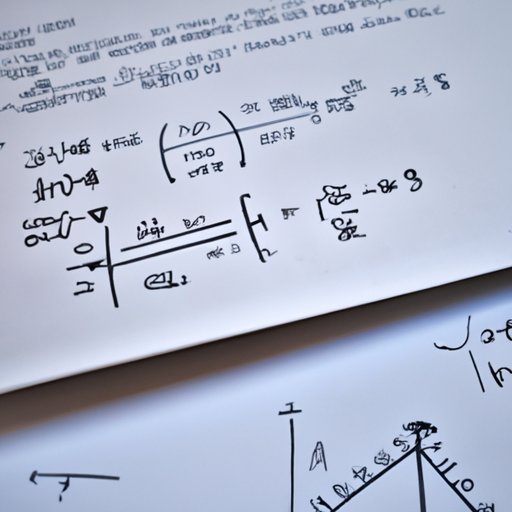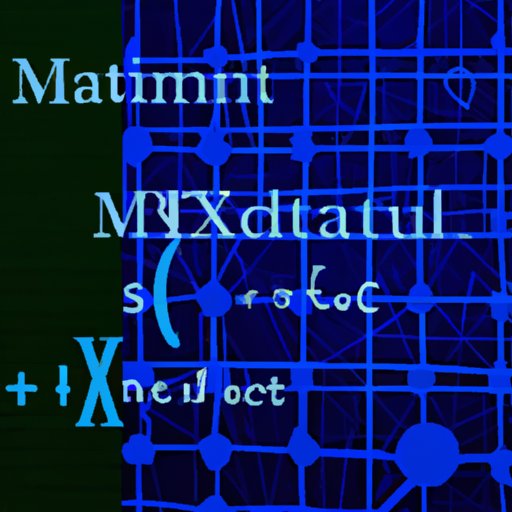Introduction
Mathematics and science have long been two disciplines that were thought to be separate, but in recent years it has become increasingly clear that they can be used together to create groundbreaking discoveries. Mathematics is essential for understanding and interpreting data, while science provides the knowledge necessary to make sense of the world around us. This article will explore how mathematics and science work together, examining the history of their collaboration, the role of mathematical models in scientific research, and the impact of technology on their intersection.

History of Math and Science Working Together
Throughout history, mathematics and science have often been intertwined, with groundbreaking discoveries made through the collaboration of both disciplines. For example, Isaac Newton’s famous law of gravity was based on mathematical equations, and Albert Einstein’s theory of relativity was also based on mathematical models. The scientific revolution of the 16th and 17th centuries further emphasized the importance of mathematics in understanding the physical world, as new theories about the universe were developed using mathematical equations. This period also saw a surge in the use of mathematics in scientific experimentation, with mathematicians such as René Descartes and Gottfried Leibniz developing new methods for analyzing data.

Mathematical Models in Scientific Research
Mathematical models are used in scientific research to explain physical phenomena, such as the motion of planets or the behavior of particles. Mathematical models allow scientists to make predictions about how certain systems will behave under different conditions, which can help them understand the underlying processes at work. By using mathematical models, scientists can also develop theories about how the universe works, which can then be tested against real-world data. In addition, mathematical models can be used to analyze data from experiments, helping researchers understand the results they observe.
Probability and Statistics in Scientific Research
Probability and statistics are also important tools in scientific research, allowing researchers to draw conclusions from large datasets. Probability and statistics can be used to calculate the likelihood of certain outcomes occurring, as well as to identify patterns in data. Statistical analysis is often used to test hypotheses and draw meaningful conclusions from experiments. Data analysis can also be used to identify trends in data over time, helping researchers understand how certain phenomena change over time.

Impact of Technology on Math and Science
Advances in technology have had a profound effect on the intersection of mathematics and science. Computers have allowed scientists to process vast amounts of data quickly and accurately, making it easier to analyze complex problems. Computer simulations can also be used to model physical phenomena, helping scientists better understand the processes at work. Technology has also enabled scientists to develop more sophisticated mathematical models, allowing them to make more accurate predictions about how physical systems will behave.
Conclusion
In conclusion, mathematics and science are two disciplines that have long been intertwined, and their collaboration has led to many important discoveries. Mathematical models are used to explain physical phenomena and analyze data from experiments, while probability and statistics are used to draw meaningful conclusions from large datasets. Advances in technology have also had a major impact on the way mathematics and science interact, enabling researchers to process data quickly and accurately and develop more sophisticated mathematical models. The potential for further collaboration between math and science is immense, and together they can continue to unlock the secrets of our universe.
(Note: Is this article not meeting your expectations? Do you have knowledge or insights to share? Unlock new opportunities and expand your reach by joining our authors team. Click Registration to join us and share your expertise with our readers.)
